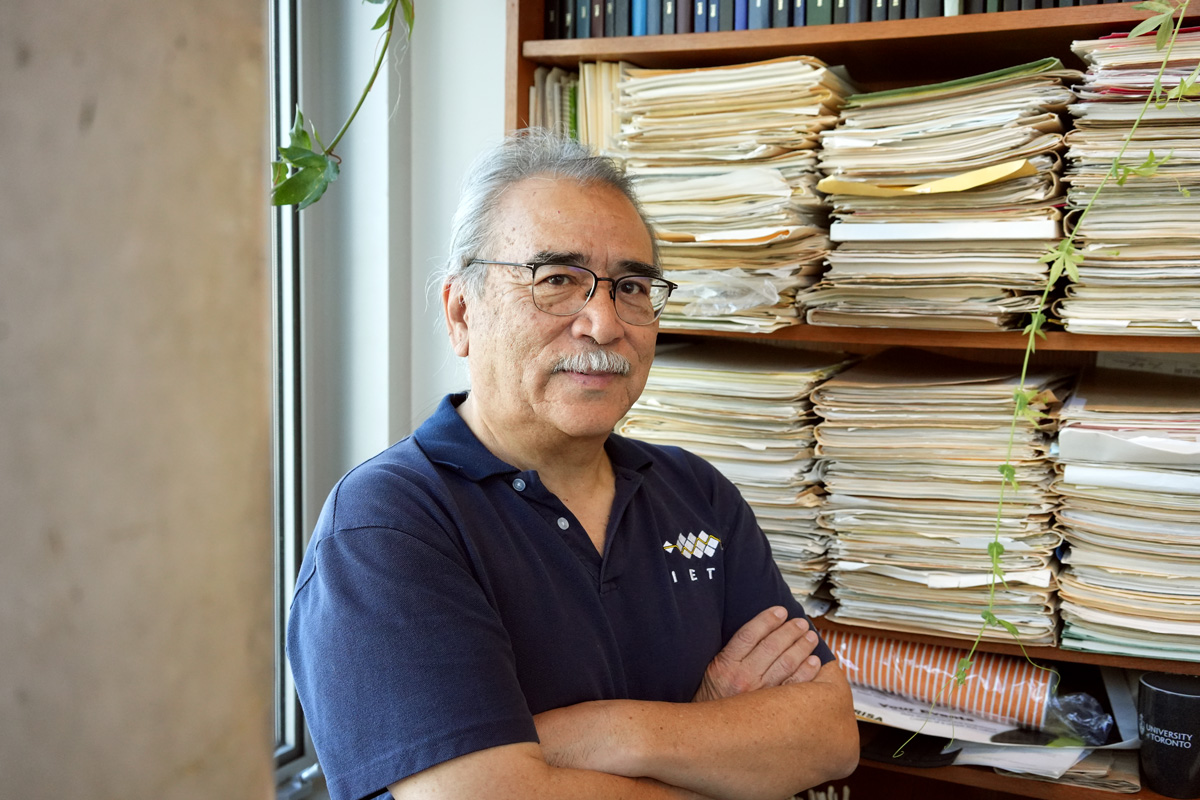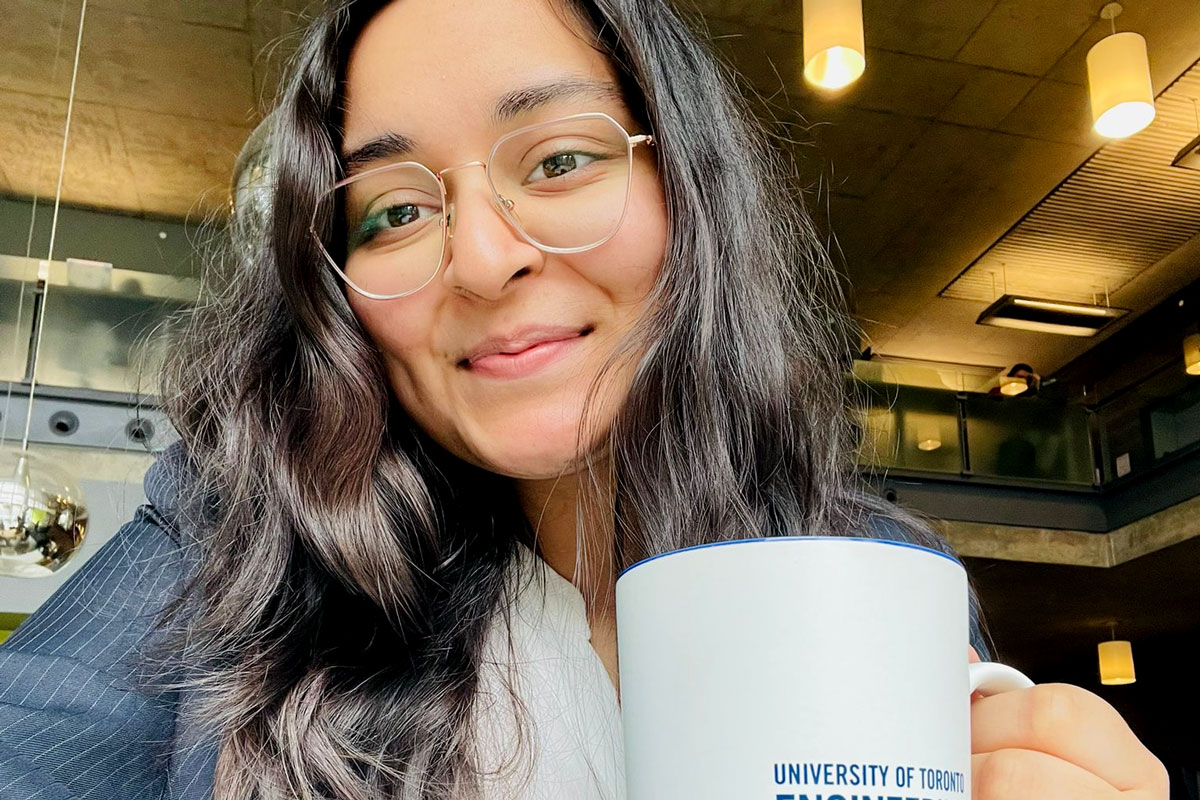Prospective Students
Undergraduate Studies
As the top-ranked electrical and computer engineering program in Canada, we are positioned to offer students state-of-the-art facilities, a faculty with extensive research and scholarly activity, and a flexible curriculum with a wide range of courses. In 2020-21, we had upwards of:
- 1,450 students
- 300 undergraduate degrees conferred
- 70% of students in the Professional Experience Year Co-op Program
- A student-to-faculty ratio of 15:1
- 33% women students
Graduate Studies
Our graduate programs — Master of Engineering (MEng), Master of Applied Science (MASc) and Doctor of Philosophy (PhD) — introduce students to cutting-edge knowledge, guided by our world-renowned faculty. Students go on to careers in many fields, not only in engineering and academia but also in business, medicine, law and others. In 2020-21, we had upwards of:
- 28 NSERC and CIHR graduate student award recipients
- 15 spinoffs formed from ECE research over the past 5 years
- $31 million in research operating funding
- 9 of 10 ECE invention disclosures that included a student inventor
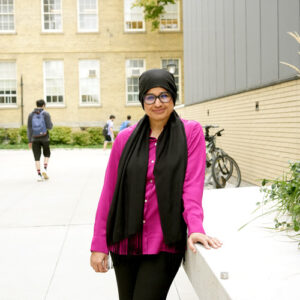
Why would someone consider doing a postdoc?
The first thing to consider is: Do you want to try to make substantial contributions to your field? Delving deeper into your specialized research interests — along with the opportunities to network, collaborate on projects and establish professional connections — can definitively make you more competitive for specific positions. Most people think that this would be in academia, that postdocs are a stepping stone to an academic position. That’s often true, but they are also so much more!
A postdoc allows you to acquire a range of valuable, transferable skills, such as project management, grant writing, communication and problem-solving. These skills can help with roles in industry, government, non-profit organizations and beyond. You also have the chance to broaden your perspective with international experience and work in diverse cultural settings — that’s what I’m doing!
Teaching is my passion. The chance to interact with students and fellow educators from diverse backgrounds leads to collaborations and discussions that push me towards new research perspectives. I believe in building strong bonds with my students on foundations of trust and respect. I adapt my teaching to how each person learns best, considering their background and culture. This helps students feel confident and engaged by the end of our time together. In short, if you're interested in a postdoc, establish your goals early on and acquire all the transferable skills you can. Make time for self-care and mental well-being. And seek the mentorship of your supervisor, who is your biggest supporter. (Thanks, Professor Adve!)

How did your extracurricular activities energize you?
Engineering has a hands-on aspect that makes classroom learning more fulfilling, but you can also get this hands-on experience in other ways. As part of UTAT, I had the opportunity to implement design features from datasheets and extremely technical documents. I learned how to navigate the entire timeline of designing a printed circuit board from schematic to layout to physically soldering components by hand. I’d say that implementing theoretical concepts is what makes engineering fun. Event-driven clubs can also be really inspiring. You meet a lot of cool people who are fired up and ready to take on the world. Seeing highly motivated students follow their passion helped equipped me with the tools to shift the gears of change. During my time as NSBE president, I frequently organized on-campus workshops with companies like Google, Microsoft and Shopify, looking to create career opportunities for students. In roles like this, you learn how to manage a team of executives, the challenges the come with it, and how to leverage industry connections into internships or full-time work.
School can be challenging at times, so it’s important to focus on the journey, not just the end result. There are many clubs here that cater to a wide variety of interests, and it’s pretty easy to find an extracurricular you like doing. But even if you don’t join a club, try to find like-minded people you can bounce ideas off of and who want to realize the same change you do. Just having your circle of people can help you form the best path forward to impacting the SkuleTM community.
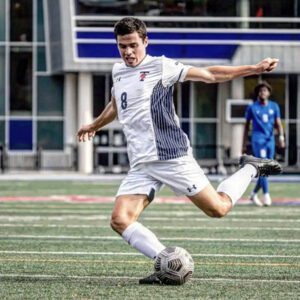
How do you balance an engineering workload with Varsity athletics?
It's difficult. I'd be lying if I said otherwise. During the University season we have about four training sessions a week, one to two hours each, and a couple of video sessions. Then there’s the games, about two each weekend, with travel (if it’s an away game, that’s an entire weekend out of the city). There are many nights where you sacrifice sleep to meet deadlines, and you sacrifice a large portion of your social life. Sometimes you have to prioritize certain courses, lectures and assignments as it’s impossible to do everything 100%. There just isn't a lot of free time. I don’t really have any specific study routines beyond just grinding it out and using whatever time I have between school and soccer to finish up as much work as possible. One thing that I do is get to know my classmates, and having people to contact in every class makes it easier to catch up on anything.
Soccer plays a huge part in my well-being and mental health, and I’m thankful for being able to play the sport I love. When I step on the pitch, it acts as a mental reset. I get this buzz, I can't really explain it. One thing I take from engineering is the importance of a good work ethic. There are no shortcuts to success — how much you put in is how much you will get back.
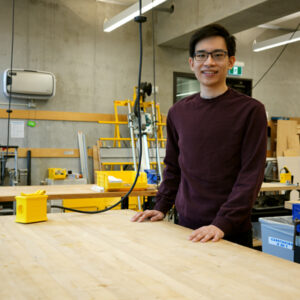
Can you describe a typical day at Intel during your PEY Co-op?
My main work was to design layout for high speed SerDes [Serializer/Deserializer] alongside many teams and analog designers. A typical day for me would consist of designing layout using industry software, meeting with peers and other engineers to discuss design challenges, coordinating project work, and learning and developing new tools or skills. I had my own cubicle to work in, managers and coworkers were all close by, and we’d take breaks together in the cafeteria on our floor. It was a very collaborative office environment. There were multiple meeting rooms redesigned to accommodate those who were working virtually. I always looked forward to our team’s weekly meetings, where we played games together and competed for prizes. Intel gave me ownership of a major portion of the layout design and delivering it as a milestone was one of the most satisfying parts of my time there. They also gave me the chance to train new hires and interns.
Our world runs on power and electricity, and advancements made by electrical engineers in a certain area can have many applications in other fields. Working at Intel, I experienced this firsthand. For those who leverage the technology to do good, every advancement and modification in a design can lead to greatly improved experiences. I’d say that for someone looking at a similar position, the engineering design courses are crucial to learn and demonstrate practical design, teamwork and communication skills.
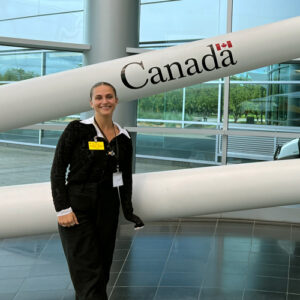
How can research into space exploration solve problems here on Earth?
A lot of the money that goes into space research positively impacts Earth. Think of spin off technologies such as GPS, artificial limbs, Velcro, Invisalign, etc. — all are a direct result of needing to create radiation proof materials, to minimize weight or maximize space onboard a shuttle, none of which would have been possible without space exploration. I had the opportunity to see this research angle firsthand when I worked at Space Tango, a microgravity research company. One of their partners, LambdaVision, is creating protein-based artificial retinas to restore sight to those with retinal degenerative diseases. They use the microgravity environment to ensure even stem cell distribution throughout the many intricate layers, increasing stability, performance and optical quality compared to what could be manufactured in normal gravity.
Another example: GHGSat, the Canadian satellite company, has become a global leader for monitoring greenhouse gas emissions, enabling industries to better measure, control and ultimately reduce emissions. While I was there, I created a visualization tool to picture where each of their satellites were positioned over the Earth at any given time, allowing for more optimal planning of their satellite schedules. To me, space is the most meaningful way I can use my interests in math, physics, robotics and engineering to make an impact here on Earth. Learn more about the Zenith Fellowship.

Your career path seems to have a surprise twist — in ice cream! How did you get there?
My path has been long and winding. I’ve done so many jobs. In first year I started a business assembling and selling computers with a classmate. After graduation I joined Hydro One as a Systems Admin for a system that helped restore power to areas experiencing outages. Later, I worked as Systems Architect and helped design the smart meter network in Ontario. Later still, as a software engineer, I worked for a food manufacturer to implement ERP solutions.
This all seems a world away from ice cream! However, engineering equipped me with the analytical skills that have been key to analyzing and overcoming seemingly daunting challenges. The most important thing I've learned is that every complex problem is merely a collection of simpler problems that can be solved by applying first principles — though you don't need to solve every problem entirely by yourself! People will surprise you with how helpful they can be when you share your challenges. Check out Graffiti Alley Ice Cream.

